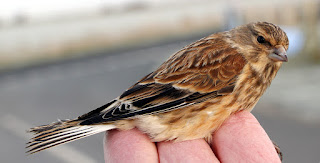Here I am on a miserable Sunday afternoon, mizzly, dank and grey with nothing on the telly, just the usual BBC propaganda, Sly News or tired old films.
I got to thinking about the birding terminology, names and acronyms used in the world of birds here in the UK. Birding and birdwatching is a pastime that has evolved its own lifestyle, culture and even language. It is a way of life often mocked and misunderstood by those yet to experience the joys of ticking a mega bird or to suffer the anguish of a dick’s pip dip.
So anyone looking to enter the world of birds may find the information below a useful Aide Memoir. Hopefully by studying and memorising some of the terminology it will allow them to slip seamlessly into the world of birds at a level appropriate to their experience – or not, as the case may be! Using the right jargon can be a passport to acceptance by the birding community, but getting it even slightly wrong can lead to being “sussed”, side-lined, and in extreme cases, quickly ostracised.
For now we’ll skip the major terms of Birder, Bird Watcher, Lister, Bird Chaser, Twitcher, Ornithologist, Robin Stroker, and Rasberry. These are labels which need a whole post and more in which to explore the perils and pitfalls of acquiring such a tag for oneself or to apply to others.
I tried to put the list in some sort of logical order but gave up and opted for random. Where appropriate there are warnings as to when, where and why it may not be wise to use a particular expression or shorthand. Some are thought to be derogatory if said to another birder’s face, the bird itself, or made in reference to a hallowed bird organisation.
The list is not exhaustive and I am sure readers can add their own examples.
Let’s start with some simple almost self-explanatory ones for LBJs - Little Brown Jobs.
Acros- Acrocephalus warblers e.g. Reed and Sedge Warbler etc. Also, reedy, sedgie.
Hippos- Hippolais warblers. e.g. Icterine Warbler and Booted Warbler etc.
Phylloscs - Phylloscopus warblers. e.g. Chiffchaff and Willow Warbler etc.
Gropper or PG Tips - Locustella warblers - Grasshopper Warbler and Pallas’s Gropper respectively.
Mipit - Meadow Pipit
Tripit - Tree Pipit
Trepi – Tree Pipit - reserved for bird ringers only. Bird Ringers have exclusive codes which set them apart from mere birders.
Wipit - Water Pipit
Rokit - Rock Pipit
OBP- Olive-backed Pipit
Dick’s Pip or Dick’s - Richard’s Pipit
RBF - Red-breasted Flycatcher
Spotfly or Spofl - Spotted Flycatcher
Sibe - a vagrant of Siberian origin
Yank - a vagrant (bird) of usually North American origin
Pink Stink – An adult Rose-coloured Starling. A tip – Birders are wholly uncomplimentary about the starling family, unless it’s a Golden O – Golden Oriole.
Fawn Yawn – a juvenile or first winter Pink Stink. Think about it, or see “Collins” below.
Junk Bird - Slightly controversial. A bird so common as to be worthless on a list other than a life list. For example - House Sparrow, Wren, Dunnock or Blue Tit. Or formerly, a Greenfinch.
Gringo - a Greenfinch.
Beware of assigning an LBJ to the wrong family tree - an embarrassing mistake that breaks a birding social convention of “knowing ones Collins”. Collins Field Guide THE Most Complete Field Guide To The Birds Of Britain And Europe.
"Gropper"
"Spofl"
Now for a few members of the wading family:
Barwit - Bar-tailed Godwit
Blackwit - Black-tailed Godwit
Hudwit - Hudsonian Godwit
Curly Wurly - Curlew
Peeps - reserved for North Americans on a UK birding trip - small Calidris waders that real birders call stints- e.g. Little Stint or Curlew Sandpiper
Oyk - Oystercatcher. As distinct from an Oik who blocks the view during a twitch.
"Curly-Wurly"
And Seabirds:
Manxie - Not a tailless cat but a Manx Shearwater
Bonxie – Great Skua
Commic Tern - Common/ Arctic Terns that are too distant to differentiate safely enough between the two. Beware of using this label and thus admitting to incompetence whilst in the company of a birder higher up the echelons of the birding world.
As above - Corvid for use when unsure whether the bird is a Rook, Carrion Crow or Raven. N.B. Can be more acceptable than Commic Tern.
Others:
Plastic - a bird which is likely to have escaped from captivity. Use with care as a “plastic” may by higher authority later become a “tick”, in which case can be retrospectively claimed as an “armchair tick”.
Yuck Duck – similar to Plastic. A hybrid but often wild duck, mostly the result of a union between a Mallard and a farmyard duck. Take care not to spend time trying to ID such birds as they will never qualify as a tick. Furthermore, the observers' credentials as as serious birder will be seriously damaged.
In Part Two of Birding Glossary we explore other terms, some of which often induce controversy and even conflict into the genteel world of bird watching. Words like suppression, stringer, dude, lumper and splitter.

































































